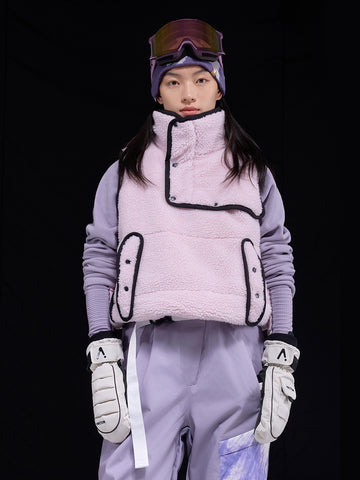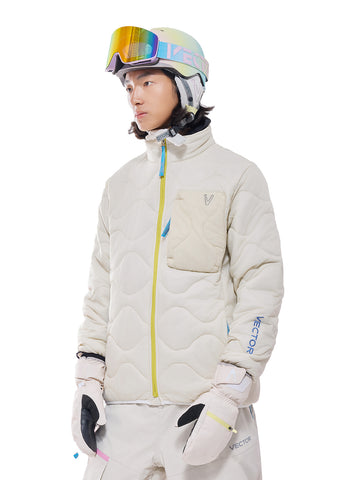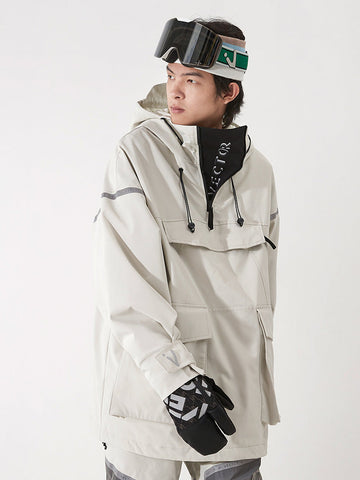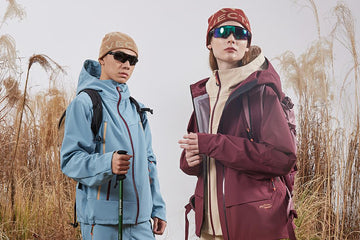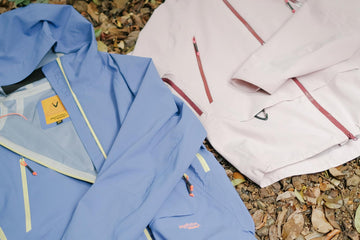One of the great debates in outdoor gear is whether to choose a hardshell or a softshell jacket as your outer layer. Deciding between these two can be like picking a side in a friendly rivalry, with each jacket boasting its own set of perks. Whether you’re after maximum waterproofing with a women rain jacket, or top-notch breathability in a men softshell jacket, we’ll dive into the strengths of both types. And while you're exploring your options, don’t forget to consider pairing your jacket with the right women hiking pants to fully optimize your outdoor adventures. This guide will help you find the perfect fit for your needs.
We will guide you through:
Types of Shells
Top Performance Elements to Consider
How to Choose: Hardshell vs. Softshell Jackets
Types of Shells

When you're out in nature, you want to feel confident and prepared, no matter what the weather decides to do. This is where a hardshell jacket comes into play—it’s like a sturdy shield designed to tackle the harshest weather conditions, whether it’s a torrential downpour, howling winds, or a sudden snowstorm. Structurally, a hardshell jacket features a three-layer design: a waterproof, breathable membrane is sandwiched between a durable outer fabric and a comfortable inner lining. A hardshell jacket is engineered to keep you dry, comfortable, and protected, no matter what nature throws your way.

The fabric of a softshell jacket is made from durable nylon or polyester, with an inner layer that’s incredibly comfortable, often crafted from brushed polyester or fleece. This makes it a cozy and soft outer layer.
When it comes to outdoor activities, comfort and flexibility are key, especially when the weather is unpredictable but not extreme. This is where a softshell jacket shines—it’s like your all-around companion, keeping you comfortable no matter what you’re doing. It offers some water resistance and does a great job at wicking away moisture, ensuring you stay dry and comfortable throughout your adventures.
Top Performance Elements to Consider
Hardshells Advantage
Weather Protection Hardshells are typically waterproof and windproof, providing exceptional protection against harsh weather conditions like heavy rain, snow, and strong winds. The advanced materials and construction, including features like sealed seams and waterproof zippers, ensure that you stay dry and shielded from the elements even in the most challenging environments.
Weight and Packability Often lightweight and designed with packability in mind, hard shells are perfect for situations where both space and weight are critical. Their compact design allows them to be easily stowed in a backpack without taking up much room or adding significant weight. This makes them an excellent choice for long hikes, climbing expeditions, or any adventure where carrying minimal gear is essential.
Softshells Advantage
Breathability Softshell jackets excel in breathability, making them a great choice for high-intensity activities. Their fabric is designed to allow moisture from sweat to escape, which helps to regulate your body temperature and keeps you comfortable even when you’re working hard. This enhanced airflow prevents you from feeling clammy and ensures that you stay dry from the inside out.
Comfort Softshells are known for their flexibility and comfort due to their stretchy materials. The fabric typically includes a blend of polyester and elastane, which allows for a full range of motion and adapts to your movements. This makes softshells particularly suited for activities that require dynamic movement, such as climbing, hiking, or skiing. The soft, brushed interior also adds a layer of coziness, making the jacket feel pleasant against your skin.
Budget-Friendly Compared to hardshell jackets, softshells are often more budget-friendly. They offer a cost-effective solution for those who need reliable performance without breaking the bank. While they may not provide the same level of waterproofing as hard shells, their affordability and versatility make them an attractive option for many outdoor enthusiasts.
Durability
Regarding durability, softshells and hardshells are on par with each other. Both types of jackets use sturdy materials designed for heavy-duty use. Softshells are constructed with robust fabrics that resist wear and tear, making them suitable for a variety of rugged conditions. While they might not be as tough as some hardshells in extreme environments, they are more than capable of handling regular outdoor activities and general abrasion.
How to Choose: Hardshell vs. Softshell Jackets
Think About Your Activity
If you’re planning something active where you’ll be moving around a lot and might work up a sweat, a softshell is probably your best bet. It’s comfortable, breathable, and won’t restrict your movement. On the other hand, if you’re facing extreme weather or less active pursuits, a hardshell will give you the top-notch protection you need.
Consider the Weather
For those unpredictable or severe weather conditions, a hardshell is your go-to for keeping the rain and wind at bay. If the weather is milder and more predictable, a softshell offers just the right amount of protection and comfort.
Reflect on What Matters Most
If staying comfy and being able to move easily is what you value, a soft-shell jacket is the way to go. If keeping dry and well-protected from the elements is your priority, a hardshell jacket is the better choice.
Summary
Choosing between a hardshell and a softshell jacket comes down to what you’ll be doing, the weather you’re expecting, and what’s most important to you. Each jacket offers unique benefits to enhance your outdoor adventures—pick the one that fits your needs and enjoy the great outdoors!
FAQ
Q: When to wear a hard shell jacket?
A: Wear a hardshell jacket in severe weather conditions, such as heavy rain, strong winds, or snow. It provides maximum protection against the elements and keeps you dry and shielded.
Q: What is the point of a softshell jacket?
A: A softshell jacket offers comfort and breathability for moderate weather. It’s great for high-intensity activities where you need flexibility and moisture management but don’t require full waterproof protection.
Q: How do I know if my jacket is a hard shell or a soft shell?
A: Check the jacket’s features, Hardshell typically has a waterproof, windproof membrane, and may include sealed seams and waterproof zippers. Softshells are usually made from stretchy, breathable fabrics with some water resistance but not fully waterproof. It’s softer and more flexible.
Reference
https://www.switchbacktravel.com/info/hardshell-vs-softshell-jackets
https://www.sierra.com/blog/hiking/hard-shell-vs-soft-shell-jacket-whats-difference/
https://www.gore-tex.com/blog/hardshell-vs-softshell-jackets-one



